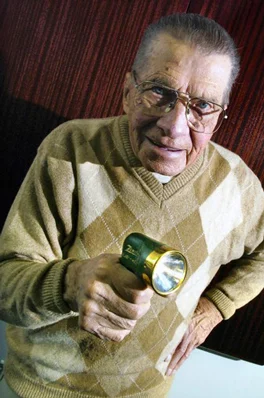There are more than a few modern devices I don’t think I can live without, including the DVR.
Frankly, I can’t imagine going back to a time where I had to manually (and tediously) set a VCR to record a specific program. Then again, the mainstream adoption of the DVR is still recent enough that most of us really appreciate it. But we probably take the remote control for granted.

Growing up in the early 80s, I was my dad’s personal remote control. If he wanted to flip channels, he sent me to the TV to turn the knob. I can still vividly recall when my dad brought home a Zenith TV set that boasted the first remote control I’d ever seen.
I can distinctly remember my dad bragging that he was now able to flip channels from across the room. Of course, I was also relieved that I didn’t have to get up and change the channel every time he got bored with a particular show.
The man who invented the remote control is Eugene Polley, who recently passed away at the age of 96. Interestingly enough, Polley designed the first wireless TV remote control way back in 1956 while working for Zenith Technology. The photo you see here is Polley holding the original remote, which looks more like a handheld flashlight than a device to change channels.
The flashlight-style remote control worked with a TV using Flash-Matic tuning, and it looked like a green ray gun with a red sender reports TechEye.
Personally, I find it amusing that advertising from 1956 also bemoaned the presence of commercials, promising that the technology was harmless to humans and could shut off annoying commercials with the picture still being on the screen. Presumably, it was talking about a mute function.
That original remote control apparently had some issues that must have been very annoying to early adopters. Since it was based on light and sensors, direct sunlight could trigger abrupt channel changes. Another inventor working for Zenith, named Robert Adler, subsequently invented a more effective device called Zenith Space Command that operated on the basis of ultrasound, rather than light. That remote control produced a high-pitched sound that TV sensors picked up, but people couldn’t hear.






